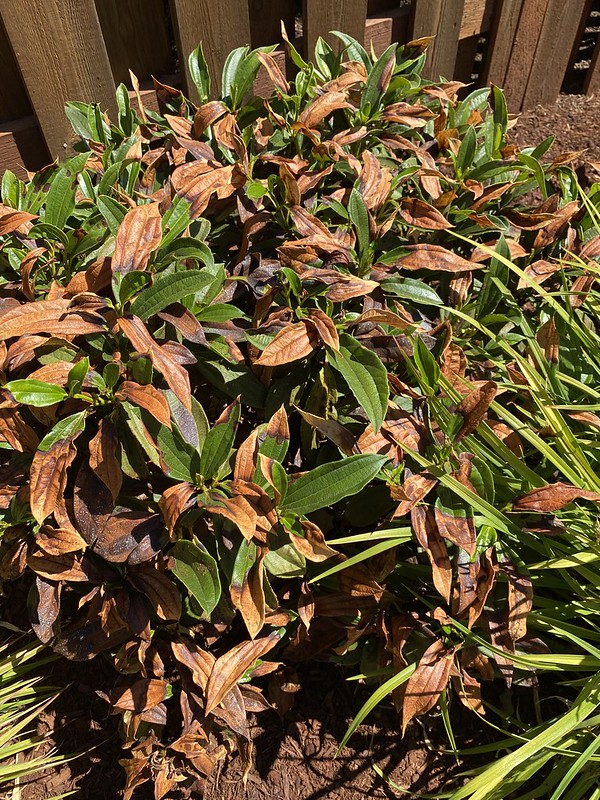Gardeners around the Northwest are distraught by the damage suffered by their plants during the recent heat wave. Questions have come pouring into Oregon State University Extension Service and experts weigh in on what to do now.
There’s no denying the damage is severe, said Heather Stoven, OSU Extension horticulturist. Some plants died and others were fried by the record-breaking temperatures. Even some that look extremely bad, like rhododendrons and hydrangeas, can bounce back. Burned leaves don’t necessarily equal a dead plant, so patience and observation is needed.
Here are some recommendations from Stoven and other experts:
- Go ahead and cut off dead flowers, but try to resist the urge to remove partially dead leaves, and especially don’t do any hard pruning. Leaves, dead or alive, will shade foliage that wasn’t burned and those with some green remaining will continue to photosynthesis. Pruning forces new growth that will be damaged if there is another heat event and creates a place where diseases and pests can enter the plant. Also, keep in mind, if you cut back spring-blooming plants like rhododendrons, you’ll be cutting off buds that will be flowers next year. Foliage will grow back unless the plant is too far gone.
- Water deeply. Use drip or soaker hoses for more efficient water use; water is lost to evaporation when using an overhead sprinkler. Roots extend beyond the plant, so be sure to cover an area wider than just under the plant. Don’t overwater, however. Stressed plants are more susceptible to pests and diseases and root rot could become a problem. To test the moisture, stick a screwdriver in the soil. It will penetrate easily if the soil is moist. The best time is early morning so plants can use the water through the day when they need it and residual water will evaporate before night.
- Berries can be pruned lightly, but wait until the usual pruning time to remove this year’s fruiting canes.
- Apply mulch 2 to 3 inches deep. Any organic matter will help retain soil moisture and even out the temperature of the soil.
- A word about hydrangeas: There are multiple species of hydrangeas, some of which are more tolerant of heat and sun. The coveted bigleaf hydrangeas, with their large blue to pink blooms, are spectacular in the garden, however, they are going to be less tolerant of extreme drought and heat. Other species such as panicle (Hydragea paniculata) and oak leaf hydrangeas ( quercifolia) can be grown in sun and tolerate drier soil. While these should not be considered drought-tolerant plants, they may be better suited for our climate and also have breathtaking blooms.
For information on how to be prepared for the next heat wave, turn to this Extension article on gardening in extreme heat.
30-
About OSU Extension: The Oregon State University Extension Service shares research-based knowledge with people and communities in Oregon’s 36 counties and the Confederated Tribes of Warm Springs. OSU Extension addresses issues that matter to urban and rural Oregonians. OSU Extension’s partnerships and programs contribute to a healthy, prosperous and sustainable future for Oregon.

